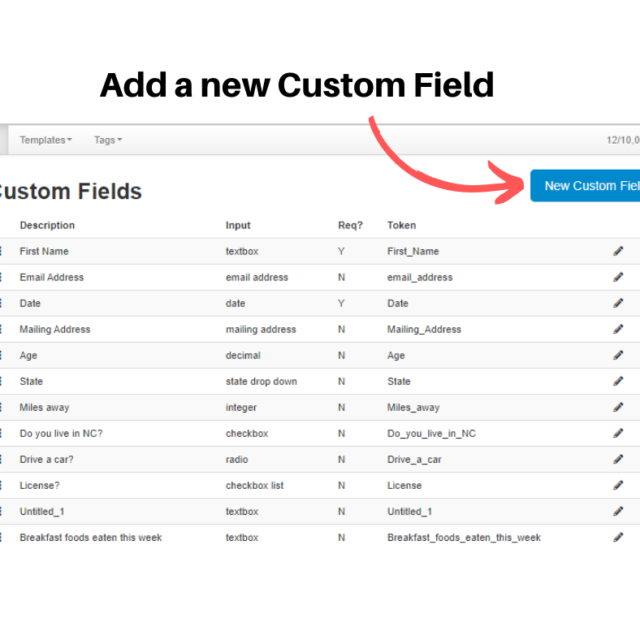You’ve done your research. You’ve drafted your questions, and you think you’re ready to send your survey.
But, how do you know it’s good enough to elicit the kinds of responses you need?
While online survey tools make it easy to send surveys, you still need to do the legwork and create a survey that actually works. This requires careful planning.
Without it, you may not get the meaningful data you’re looking for.
To help you evaluate your survey, in this article, we look at how to know if you have “good survey questions.”
Take a look at the following and then look at your survey questions. If they meet these qualifications, you have good survey questions.
Have a Goal
Do you have a goal for your survey? It’s best practice to have a goal in mind before you start crafting your survey questions.
For example, ask yourself about the objective of your survey. What’s the most important thing you want to know? What else are you looking for?
Once you have your goal, you can craft questions to go with it.
Keep It Simple
We can almost promise you that your customers won’t answer long surveys (unless the reward is overly beneficial).
Because of this, you want to keep your survey as simple as possible. If your survey is simple, and short, you’re more likely to have a larger pool or respondents.
People are busy, and you want to provide them easy access to your survey. Make sure they can complete your survey in under 10 minutes. (tweet this)
If you want to ensure the best results, keep your survey well under five minutes. Show your respondents you care and respect their time, otherwise your abandonment rate will skyrocket.
Stay Away from Yes/No Questions
Otherwise known as a polar question, the yes/no question in most instances isn’t going to provide you much data.
With this question there are only two possible answers, and that is all you’re going to get.
You leave your respondents without a voice. They can’t tell you what they think, and they have no other choice by yes or no. It may be they are somewhere in between.
What’s more, this question is leading. If your respondent isn’t squarely in the yes or no corner, they are forced to pick one of those answers, creating bias.
You’re after real, authentic data, and the polar question isn’t the way to get it.
If you are really set on a closed-ended type of question like this, at least give your respondents multiple items to choose from. The multiple choice question is certainly a better option because you are giving them more choices.
In addition, you may also want to include a line for “other,” so they can add their own answer. After all, you may not have thought of all possible answers.
Use the Right Type of Question
When working with surveys, you’ll note there are many different types of questions.
In order to get the best data, you want to use the right type of question.
Qualitative questions are open-ended. Use these types of questions when you want a written answer.
Quantitative questions are closed-ended, and you offer options for respondents. These may include:
- Check boxes
- Drop down menus
- Radio buttons
- Rating scales
- Ranking scales
Often, you’ll find that a mix of questions is ideal for your needs. You might even follow up with an open-ended question after a respondent answers a closed-ended question in a particular way.
Use Open-Ended Questions
This type of question can be very valuable because your respondents provide a comment. It can be one sentence or many and often gives you insight into how your survey respondents really feel about your business or your products.
The open-ended question allows you to really dig deep for data.
As we just mentioned, not all of your questions have to be open-ended nor should they be. Consider one or two open-ended questions so as not to overly tax your respondents.
Do be careful when wording this question. You want to ensure you aren’t leading respondents to a particular answer.
Ask One Thing in Each Question
This is a problem that derails many survey writers.
It happens when someone writes a question that actually includes more than one question. For example:
- Do you like product x? What is your favorite thing about it? How is it beneficial?
Not only are you asking too many similar questions, but you’re confusing your respondents.
If it was open-ended, you might expect to only get one of your questions answered. If it was closed-ended, your respondents wouldn’t know what to answer, so your data will be skewed.
Each question should pose only one thing. Don’t make it hard for respondents to answer you accurately and precisely.
You might reword the above example like this: “What do you find most beneficial about product x?”
Don’t Use Leading Words
Great writers know that words can have very different meanings depending on their context.
Good survey writers are aware of the same nuances.
In order to get the most precise data from your survey, be very careful with your wording. Make sure your questions aren’t leading and that they say exactly what you mean.
Have others look over your questions to see if they interpret them differently than you meant them.
Avoid Double-Barreled Questions
Similar to the leading question, this one shows great bias.
For example, if you own a hotel, a double-barreled question might look like this: “Is our hotel your favorite place to stay?” Or, “What is the most economical hotel for you to stay at?”
Not only are these questions leading, but in the case of the last question, one person’s economical isn’t always the same as another.
Final Thoughts
Some sources attribute the following to Albert Einstein, “If I had an hour to solve a problem, and my life depended on the solution, I would spend the first 55 minutes determining the proper question to ask… for once I know the proper question, I could solve the problem in less than five minutes.”
As you craft your survey and look for good survey questions that produce the best data, consider this quote.
If you ask the right questions and in the right manner, you’re sure to get the data you’re looking for to meet your overall goals.
Surveys help you make the best decisions for your business. Are you ready to get started with your free Survey Town trial? Start with your free account today, and you can upgrade at any time.
Image: rawpixel on Unsplash




